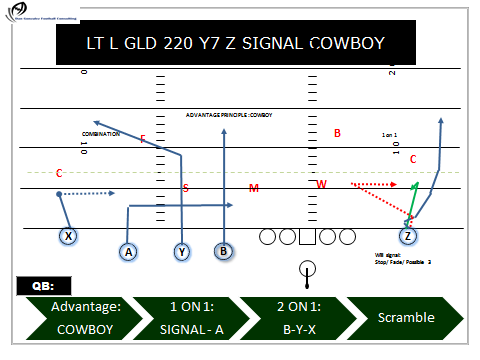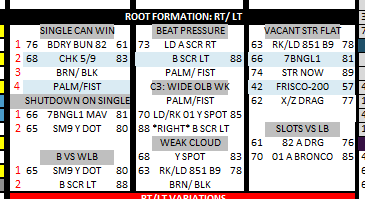- Spread is an ideology of formationing, and has no attachment to the read concepts used in the passing game
- There are plenty of "pro style" systems that do just as bad of a job preparing the QB
- Too often, the people complaining about the NFL-readiness of college QBs are always drafting high (i.e. losing), while the very best teams in terms of moving the ball look A LOT like "college spread" offenses (Patriots, Steelers, Falcons, Raiders) with 3-4 receiver sets and no huddle playing a huge part of the offense. It can also be noted that guys like Garoppolo, Prescott, and Carr were "spread" QBs in college, and doing fine. Garropolo was a product of the much maligned "Baylor" offense, Prescott played in the same college system as Tim Tebow, and Carr was a quick screen king at Fresno State. So, I don't buy this type of logic.
What I do know is this: regardless of the level of play, a very high degree of efficiency can be achieved. How? Simply put - give the QB options. Make the defense cover the formation, and be forced to assign help to your best players. Then, provide a sequence for him to follow (a progression), but have the flexibility to, as a coach, spotlight the open guy and simply say "put the ball on this guy."
That's what we've done with ACTS in the dropback game, but we have even created ways to fuse ideas, keeping the offense nimble, and ready to adjust to personnel. In just a short period of time, 2 schools that are using the system for the first time are experiencing marked success. Compare to the same point in the season last year:
Gooding High School, ID
2015 (pre system): QB Wyatt Williams was 101/203 (49.7 %) for 1623 yds, 21 TD, 5 INT, 110 carries 752 yds, 5 TD
2016 (w/ system): QB Tyler VIsser is 97/152 (63.8%) for 1740 yds, 23 TD, 5 INT, 120 carries for 953 yds, 8 TD
Hillcrest HS, AL
2015: QB Cole Frederick through 12 games: 123/232 (57%) 1829 YD, 15 TD, 6 INT
2016: QB Cole Frederick through 7 games: 114/158 (72%) 1688 YD, 15 TD, 0 INT
It's clear that by giving the QB options across the width of the field (rather than limiting his choices), more opportunities are available to complete passes, sustain offense, and score points.
THROUGH 6 GAMES:
84/ 123 (68.3 %)
22 Passing TDs
10 Rushing TDs
***0 Turnovers***
Reading is reading - whether it be under center or in shotgun (whether you are a "pro" or "spread" type of offense - there are systems in both categories that are both good or bad in developing the passer's ability to make decisions. The thing is - this isn't rocket science; as Gary Daniels described it, football is more chess than checkers.
This is done by:
- Making the defense cover all eligible receivers
- Creating structural problems for the defense that require "help" (a safety)
- A network of advantage routes and principles that lends itself to getting the ball OUT FAST - even when there is no pressure
- Pressuring the defense by going ultra fast, or using motion and movement to uncover - but the defense must be ready to play through it all
- Having a system of calling and reading pass patterns that allows for simplicity for players, yet appears complex for the defense.
Every play on our wristband has a purpose, and the thought process in the overall scheme of things is never forgotten. For example, our game planning worksheet also serves us on our game day call sheet. Here is an illustration of some applications in a standard 3x1 set, which we simply refer to as RIGHT and LEFT:




 RSS Feed
RSS Feed
